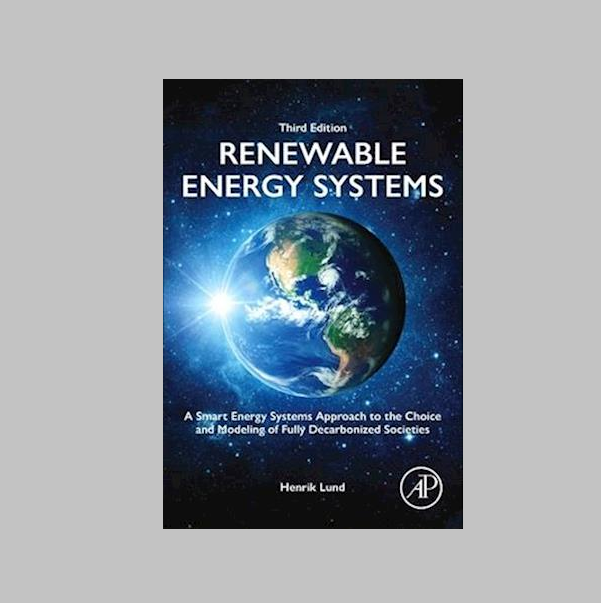Fuel cells and electrolysers in future energy systems (2006-2009)
Authors:
Brian Vad Mathiesen
In his PhD thesis, Fuel cells and electrolysers in future energy systems, Brian Vad Mathiesen used the EnergyPLAN model as part of the research. Fuel cells and electrolysers have the potential for supplying three main energy services to the end-users: electricity, heat and transport; and can replace existing less efficient or more polluting technologies. The challenge is to identify in which applications these technologies should be used for. In the future energy systems, the key technologies are intermittent energy resources, such as wind turbines, solar photovoltaics, solar thermal and wave power, as well as more efficient energy conversion technologies, such as CHP and energy savings in demand. In the thesis, different applications of fuel cells and electrolysers in future energy systems have been analyzed. The document can be downloaded here.
The EnergyPLAN model has been applied to the analyses of individual house heating systems and has been used to identify how excess electricity can be utilised. The results of the analyses are summarized bellow:
Analysis of individual house heating systems
The results of the energy system analyses of individual house heating systems was conducted by the use of a model, illustrating three of the six heating systems analyzed. The technologies illustrated are analyzed in a business-as-usual system with 50% wind power and with no CHP plants, as well as in a system with large quantities of CHP plants for district heating.
The results of the analyses of individual housing heating systems are illustrated based on the alternatives identified by the EnergyPLAN 7.20 model and can be downloaded from here. The results sheets are available bellow:
- Reference 2030 with CHP: The Danish reference energy system with CHP plants supplying approx. 50 per cent of the heating via district heating system as the case is today and with 50 per cent wind power instead of the 20 per cent in the system today.
- Reference 2030 without CHP: The same system, but in which CHP plants are replaced with boilers.
In these systems, heat is supplied with a natural gas boiler. - Natural gas micro fuel cell CHP units with CHP: The same amount of households supplied with heat from natural gas micro fuel cell CHP units in an energy system with CHP.
- Natural gas micro fuel cell CHP units without CHP: The same amount of households supplied with heat from natural gas micro fuel cell CHP units in an energy system without CHP.
- Heat pump individual with CHP: The same amount of households supplied with heat from individual geothermal heat pumps in an energy system with CHP.
- Heat pump individual without CHP: The same amount of households supplied with heat from individual geothermal heat pumps in an energy system without CHP.
The input files with input data to the three analyses can be downloaded bellow:
- Reference 2030 in energy system with CHP
- Reference 2030 in energy system without CHP
- Natural gas micro fuel cell CHP units in energy system with CHP
- Natural gas micro fuel cell CHP units in energy system without CHP
- Individual heat pump in energy system with CHP
- Individual heat pump in energy system without CHP
Analysis of integration technologies
Here, you can see the results of the analysis of integration technologies. In the reference situation, the large wind power share leads to excess electricity production. The aim here is to analyse how to utilise this electricity. The technologies included are: electric boilers (EB), heat pumps (HP), electrolysers supplementing fuel for CHP plants (ELT/CHP), electrolysers and hydrogen micro CHP (ELT/micro), hydrogen fuel cell vehicles (HFCV), battery electric vehicles (BEV), and 5 per cent flexible demand (5%FLEX). The results illustrate a wind power share of 50% and the phases from 0 to 100% wind power share in the Danish energy system.
The results of the analyses of technologies for large-scale integration of renewable energy sources illustrated are based on the following alternatives identified by use of the EnergyPLAN 7.20 model. Only the reference file, the file with electrolysers combined with CHP plants and the file with large-scale heat pumps are included here:
- Danish Reference 2030: The Danish reference energy system with CHP plants supplying approx. 50 per cent of the heating via district heating system as the case is today, and with 50 per cent wind power instead of the 20 per cent in the system of today.
- Alternative with electrolyser: The same energy system, but in which electrolysers supply hydrogen to CHP plant when excess wind is available.
- Alternative with large-scale heat pumps: The same energy system, but in which large-scale heat pumps supply heat for district heating in connection with CHP plants.
The input Files with input data to the three analyses can be downloaded bellow:
In the phase from 0 to 100% wind power, the same files can be used for the modelling.
Contact
If you experience further challenges using the model that are not answered in any one of pages at the site, you are more than welcome to contact us and we will try to help you.
Email us hereBook, 3rd Edition out now

3rd Edition Renewable Energy Systems – A Smart Energy Systems Approach to the Choice and Modeling of Fully Decarbonized Societies
By Professor Henrik Lund
List price: USD 100.00 / GBP 76.76 / EUR 87.20
Buy here